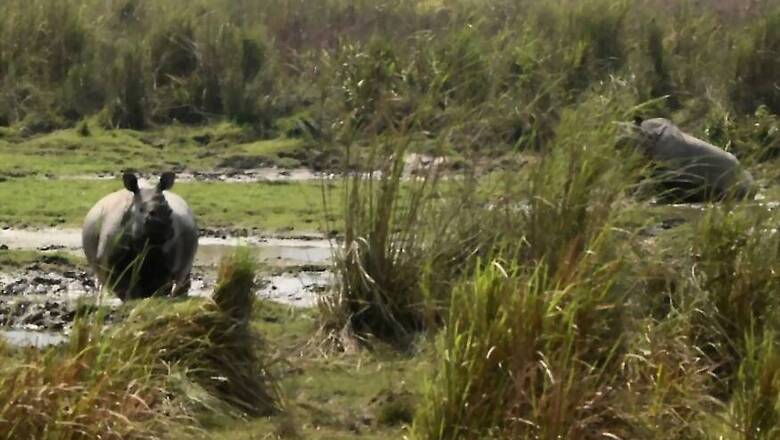
views
Guwahati: The best of experts in wildlife research came together after three years to conduct the one-horned rhino census in Kaziranga National Park.
The two-day exercise started on Monday with park authorities using more than 40 elephants and 17 SUVs to work out the total number of rhinos in the park.
A total area of 882 sqkm including the Brahmaputra river area which makes for the 6th Addition to Kaziranga was divided into 74 compartments for the census count. A total of 36 blocks was covered on the first day while another 38 was covered on Tuesday.
“We covered 38 blocks today, and now the compilation remains to be done. After the sample count, results would be out in one or two days,” said Park Director, Akash Deep Baruah.
Census count is an elaborate process that involves enumerators, observers, forest officials, NGO activists, guides and mahouts. The jeep safari association and the district administration also play an important role. Enumerators are responsible for locating rhinos and doing the actual physical counting. Not all compartments are covered on elephant backs. The results are then fed to the technical committee constituted under the Principal Chief Conservator of Forests (PCCF). The role of guides is restricted to area identification and providing security to the team.
“We could count 100% of Kaziranga in the two-day exercise. The method of counting requires good conditions and all these factors would be examined once the compilation is over and feedback is collected from the enumerators,” said NK Vasu, the state principal chief conservator of forests (wildlife).
Sources told News18 that grasslands burning this season has not been to the desired level due to weather conditions which affected visibility during the count.
According to the last survey in 2015, the rhino population in Kaziranga National Park is 2,401 that includes a viable breeding herd of 802 females.


















Comments
0 comment